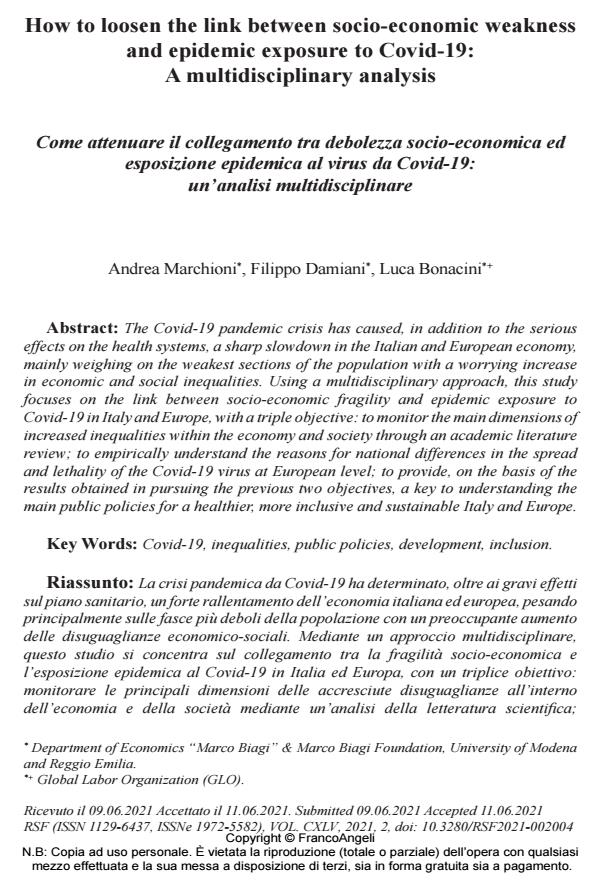Come attenuare il collegamento tra debolezza socio-economica ed esposizione epidemica al virus da Covid-19: un’analisi multidisciplinare
Journal title RIVISTA SPERIMENTALE DI FRENIATRIA
Author/s Andrea Marchioni, Filippo Damiani, Luca Bonacini
Publishing Year 2021 Issue 2021/2
Language English Pages 16 P. 37-52 File size 188 KB
DOI 10.3280/RSF2021-002004
DOI is like a bar code for intellectual property: to have more infomation
click here
Below, you can see the article first page
If you want to buy this article in PDF format, you can do it, following the instructions to buy download credits

FrancoAngeli is member of Publishers International Linking Association, Inc (PILA), a not-for-profit association which run the CrossRef service enabling links to and from online scholarly content.
The Covid-19 pandemic crisis has caused, in addition to the serious effects on the health systems, a sharp slowdown in the Italian and European economy, mainly weighing on the weakest sections of the population with a worrying increase in economic and social inequalities. Using a multidisciplinary approach, this study focuses on the link between socio-economic fragility and epidemic exposure to Covid-19 in Italy and Europe, with a triple objective: to monitor the main dimensions of increased inequalities within the economy and society through an academic literature review; to empirically understand the reasons for national differences in the spread and lethality of the Covid-19 virus at European level; to provide, on the basis of the results obtained in pursuing the previous two objectives, a key to understanding the main public policies for a healthier, more inclusive and sustainable Italy and Europe.
Keywords: Covid-19, inequalities, public policies, development, inclusion.
Andrea Marchioni, Filippo Damiani, Luca Bonacini, How to loosen the link between socio-economic weakness and epidemic exposure to Covid-19: A multidisciplinary analysis in "RIVISTA SPERIMENTALE DI FRENIATRIA" 2/2021, pp 37-52, DOI: 10.3280/RSF2021-002004